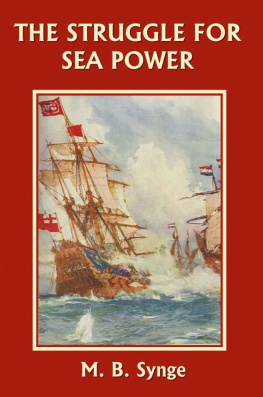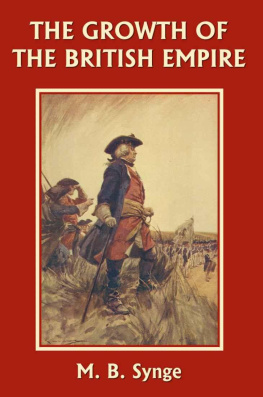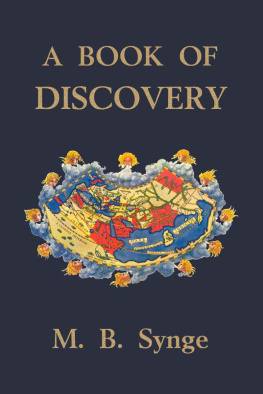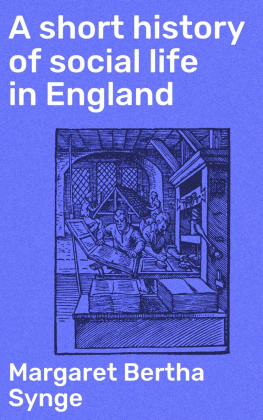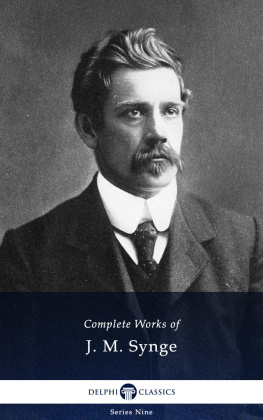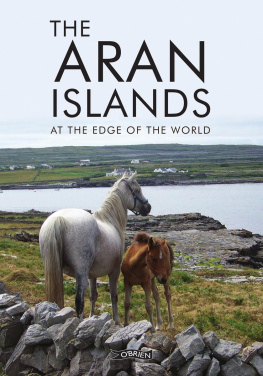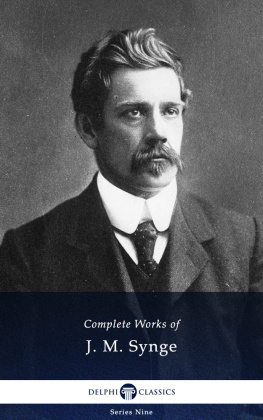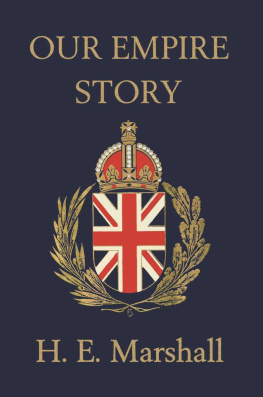The Struggle for Sea Power
by
M. B. Synge
Yesterday's Classics
Chapel Hill, North Carolina
Cover and Arrangement 2010 Yesterday's Classics, LLC
All rights reserved. No part of this book may be reproduced or retransmitted in any form or by any means without the written permission of the publisher.
This edition, first published in 2010 by Yesterday's Classics, an imprint of Yesterday's Classics, LLC, is an unabridged republication of the work originally published by William Blackwood and Sons in 1904. This title is available in a print edition (ISBN 978-1-59915-016-1).
Yesterday's Classics, LLC
PO Box 3418
Chapel Hill, NC 27515
Yesterday's Classics
Yesterday's Classics republishes classic books for children from the golden age of children's literature, the era from 1880 to 1920. Many of our titles are offered in high-quality paperback editions, with text cast in modern easy-to-read type for today's readers. The illustrations from the original volumes are included except in those few cases where the quality of the original images is too low to make their reproduction feasible. Unless specified otherwise, color illustrations in the original volumes are rendered in black and white in our print editions.
Contents
CHAPTER I
The Story of the Great Mogul
"Oh, East is East, and West is West, and never the twain shall meet."
K IPLING.
T HE wonderful story of England's conquest of India reads, even to-day, like some fairy legend of the Old World.
It is the story of how one small island, away in the Northern seas, conquered an empire ten times its own size, at a distance of 6000 miles. In the ages of long ago, when the Egyptians were building their pyramids, when the Phnicians were sailing to the Pillars of Hercules, when the Greeks were adorning Athens and the Romans were spreading their empire far and wide, this England was still sleeping on the waves of the boundless sea.
It was not till after the Roman Empire had fallen, not till the Portuguese had found their way across the Sea of Darkness to India, not till the Spaniards had discovered the New World, that England awoke to a sense of the great possibilities that lay before her. Slowly and surely, from this time onwards, she stretched forth her arms over the broad seas that had once been her barriers, until, by her untiring energy, she won for herself an empire "on which the sun never sets."
Her first great conquest was that of India or Hindostanthe land of the Hindoos. It is a country cut off from Asia by a lofty range of mountains known as the Hima-laya, or snow abode. Here are some of the highest peaks in the world, never scaled by man. Here, too, rise the largest rivers in Indiathe Indus and the Ganges, on which most of the large towns are built. Most of the country lies within the tropics. Hence it is a land of wondrous starlight and moonlight, a land of whirlwind and tempest, of pitiless sun and scorching heat. Here to-day, as of old, are men with dark faces and long beards, dressed in turbans and flowing robesmen for the most part Mohammedans, praying at intervals throughout the day, with their faces toward Mecca.
At the time that Alexander the Great entered India,327 years before the birth of Christ,the land was parcelled out into a number of small kingdoms, each under the government of its own Raja. Each Raja had a council known as the Durbar. When a Raja conquered other Rajas he was known as a Maha-raja or Great Raja, and all these words are used in India to-day.
In the sixteenth century a race of Mongols or Moguls swept into India from Central Asia and founded an empire in the north. Marco Polo
THE GREAT MOGUL
But under the Great Mogul Aurangzeb, the "Conqueror of the Universe," the empire reached the height of its glory. He had usurped the throne, put his father into prison, and murdered his three brothers. His crown was uneasy, but secure. At Delhi he held his magnificent court. Here was the palace of the Great Mogul, built on the river Jumna, a tributary of the Ganges. The magnificent gateway of the palace was guarded by two huge elephants of stone, each bearing the colossal statue of a Raja warrior on his back. Here too was the grand hall of audience, where the Durbar was held. The ceiling was of white marble, supported by thirty marble columns, bearing an inscription in gold: "If there be a Paradise on earth, it is this." The throne was in a recess at the back of the hall, and over the throne was a peacock made of gold and jewels, valued at a million pounds.
One day Aurangzeb was sitting on his throne at a Durbar at Delhi, when his old tutor appeared before him. The Great Mogul had suddenly stopped his pension, and he had come to know the reason. Aurangzeb gave him the explanation in public.
"This tutor," he cried, "taught me the Koran (Mohammedan Bible) and wearied me with rules of Arabic grammar, but he told me nothing at all of foreign countries. I learnt nothing of the Ottoman Empire in Africa. I was made to believe that Holland was a great empire, and that England was bigger than France."
When his birthday came round the Great Mogul was weighed in state, and if he was found to weigh more than on the preceding year there were great public rejoicings. All the chief people in the empire came to make their offerings: precious stones, gold and silver, rich carpets, camels, horses, and elephants were presented to him. He had tents of red velvet embroidered in gold. He had seven splendid thrones,one covered with diamonds, one with rubies, one with pearls, one with emeralds, though the Peacock Throne was the most valuable. While the Great Mogul was on his throne, fifteen horses stood ready on either side, their bridles enriched with precious stones. Elephants were trained to kneel down before the throne and do reverence with their trunks. The Emperor's favourite elephant was fed on good meat, with plenty of sugar and brandy.
Aurangzeb himself was nearly one hundred years old when he died. Suspicion lest his sons should subject him to the fate which he had inflicted on his own father left him a solitary old man. As death approached terror and remorse seized him. "Come what may," he cried desperately at the last, "I have launched my vessel on the waves. Farewell! farewell! farewell!"
So passed the last of the Great Moguls who ruled for over two hundred years in India. The empire was soon after broken up, and the way left clear for England to found her great Eastern Empire beyond the seas.
CHAPTER II
Robert Clive
"Clive kissed me on the mouth and eyes and brow,
Wonderful kisses, so that I became
Crowned above Queensa withered beldame now
Brooding on ancient fame."
K IPLING (Madras).
D URING the forty years after the death of Aurangzeb a great change passed over India. The great Mogul Empire was broken up; enemies invaded the land from north and south. They preyed on the defenceless country, they marched through the gates of Delhi and bore away in triumph the Peacock Throne and all its priceless jewels.
From the time of Alexander the Great little intercourse had been held between Europe and the East. But from that May day in 1498, when Vasco da Gama and his brave Portuguese sailors stepped ashore at Calicut, there was constant communication with the ports on the western coast. For some time Portugal had claimed exclusive right to her Indian trade, but after a time Dutch ships sailed to her eastern ports. The enterprise of Holland roused commercial enthusiasm in England and France until these three nations had established trading stations in the East.

